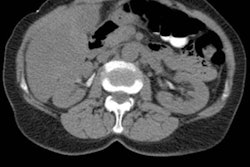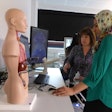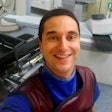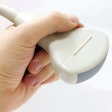
Radiology experience is not always an indication of how much radiation dose patients receive, according to a recent study in the European Journal of Radiology (EJR). Researchers found less experienced trainees tend not to expose patients to increased radiation as compared with their more experienced colleagues when it comes to fluoroscopic-guided hip injections.
The research team identified all fluoroscopic-guided hip injections performed at a Canadian university's radiology residency training program over a three-year period, comparing those performed by residents with those by established radiologists. The researchers found no association between training level and patient radiation exposure (EJR, 8 July 2017).
"Radiology residents perform a large volume of fluoroscopic-guided hip injections starting early on in their medical training, potentially impacting patient safety through elevated radiation exposure," wrote the study authors, led by Brendan Sanders, a medical student at the University of Ottawa School of Medicine. "However, our study found no association between radiologist level of training and patient radiation exposure, as measured by fluoroscopy time and dose area product."
Testing the theory
Corticosteroids are a common treatment for hip osteoarthritis in lieu of surgical treatments. However, the deep location and anatomy of the hip mean image guidance is required to ensure a safe and accurate injection. Many institutions use fluoroscopy, which has excellent visualization of the osseous hip anatomy and aids needle positioning, but it involves x-rays and imparts ionizing radiation onto patients and also medical staff, according to the authors.
Is the radiation dose delivered to the patient dependent on the skill, experience, and diligence of the operating physician? That's precisely what the researchers sought to find out.
As part of the University of Ottawa's institutional radiology training program, residents perform a large volume of fluoroscopic procedures. The researchers identified all fluoroscopic-guided hip injections (Axiom Luminos dRF fluoroscopy system, Siemens Healthineers) performed between August 2012 and May 2015. Performing radiologists were divided into groups based on their level of training at the time of the procedure: first-year residents (R1), second-year residents (R2), third-year residents (R3), fourth-year residents (R4), staff fellowship trained musculoskeletal (MSK) radiologists, and non-MSK radiologists.
A total of 1,362 hip injection procedures met the inclusion criteria. Twenty residents comprised the R1 group, 19 in R2, 18 in R3, and 20 in R4. Five non-MSK radiologists and seven MSK radiologists also performed hip injections.
Fluoroscopy performance
The overall average fluoroscopy time was 26 seconds, and the overall average dose area product was 20.4 uGy*m2. The researchers found no statistically significant difference among the groups.
| Fluoroscopy time and radiation dose | |||
| Level of training | No. of cases | Average fluoroscopy time (sec) | Average dose area product (uGy*m2) |
| R1 | 447 | 27 | 20.9 |
| R2 | 221 | 27 | 20.0 |
| R3 | 187 | 29 | 22.6 |
| R4 | 181 | 28 | 21.1 |
| Non-MSK radiologist | 112 | 24 | 20.6 |
| MSK radiologist | 214 | 21 | 16.1 |
| Overall | 1,362 | 26 | 20.4 |
"Our results show no statistical difference between the average fluoroscopy time or dose area product for any group, refuting our hypothesis of an association between level of training and radiation metrics with respect to therapeutic hip steroid injections," the authors wrote. "The most experienced groups, MSK and non-MSK radiologists did not demonstrate statistically significant lower radiation metrics than resident groups."
The similarities may be attributed to the fact that staff MSK radiologists may accept a longer fluoroscopy time and higher dose area product for demonstration and instruction, according to the authors.
"It was expected that each consecutive year of resident training would demonstrate lower radiation outcomes than the previous years; however, there were no observable differences between any of the resident groups," they added.
Possible reasons are first-year data may be artificially lower as a result of supervision and intervention by staff. Also, upper-year residents are further removed from radiation safety training that occurs early on in residency and, thus, could be less vigilant with radiation exposure than novice trainees. The lack of significant differences may also reflect the fast learning curve associated with the procedure -- proficiency may be achieved after a relatively fewer number of cases, and, as a result, no significant difference is seen when comparing subsequent training levels.
The authors noted several study limitations, such as variations in the data could have been a function of case complexity that could not be accounted for. Also, the exact degree of assistance provided by the attending radiologist is unknown. Similarly, the data were collected based on the assumption the report author was the individual performing the procedure, but this may not have always been true. Lastly, the success of each injection was not evaluated -- it is possible suboptimal or partial intra-articular positioning may have occurred.
Based on the study findings, the authors concluded that radiologists' level of training is not associated with patient radiation dose for fluoroscopic hip injections.
"Resident trainees maintain radiation exposure to patients at levels comparable to their more experienced colleagues," they wrote.
















